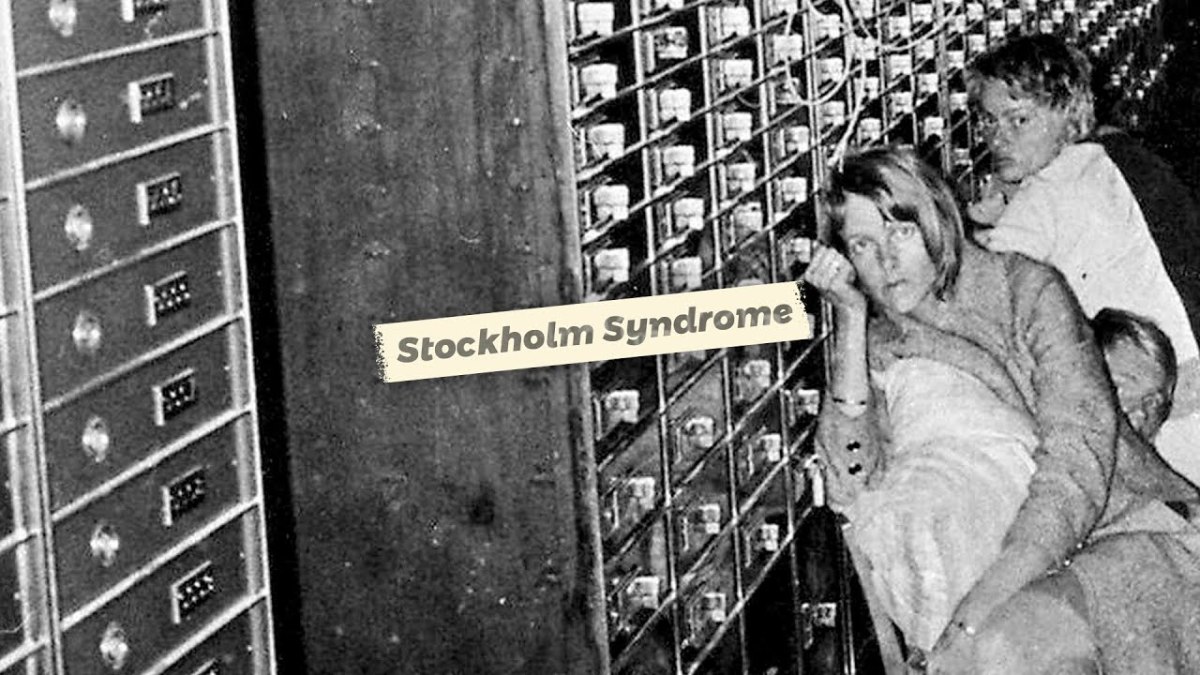Stockholm Syndrome - Meaning, History, and Famous Cases
What is Stockholm Syndrome?
Stockholm syndrome occurs in hostage situations, in other words, when people are placed in a situation over which they have no control, and are forced to depend on their captors. It is a psychological phenomenon in which the hostages actually develop positive feelings (most often empathy) towards their captors and sympathy for their problems. They ignore the fact that the hostage takers put their victims at great risk, and focus instead on their failing to abuse them. This is often mistaken for an act of kindness and compassion.
According to the FBI's Hostage Barricade Database (HBD), approximately 27% of all hostages display signs of Stockholm Syndrome.

Origin of the Term "Stockholm Syndrome"
Stockholm Syndrome is named for the Norrmalmstorg bank robbery, during which a branch of Kreditbanken in Norrmalmstorg, Stockholm was burgled. A number of the bank's employees were held hostage and kept in a bank vault from August 23rd to August 28th, in the year 1973. The victims developed strong bonds with the hostage takers over the five-day period, and even rejected help from government officials at points throughout the ordeal. Once freed they defended their aggressors and were convinced that it was the police whom they should be wary of.
The title "Stockholm Syndrome" was first used in a news broadcast by criminologist and psychiatrist Nils Bejerot, and was instantly adopted as a term that would be used to aid in live hostage situations.
Evolutionary Explanation for Stockholm Syndrome
In prehistoric times, one of the main major problems faced by humans (women in particular) was the threat of being abducted by other tribes or groups. If the women showed resistance to being kidnapped, they faced being killed.
Researcher Azar Gat supposes that this would have been a very common occurrence among our hunter-gatherer ancestors, and when instances take place often enough, and to a large enough amount of people, the reaction (capture-bonding, in this case) begins to become universal.
Books on Stockholm Syndrome
Triggers of Stockholm Syndrome
Triggers are different for everyone, but as a general rule, when put in the following, extremely stressful positions/states of mind, individuals often fall victim to Stockholm Syndrome:
-When they believe that escape is impossible.
-When they are isolated from everyone else and have contact only with the hostage takers.
-When they believe that their tormentors have the ability to kill them, and are not afraid to do it.
-When they inflate their captor's acts of mercy into a genuine friendship.
It is not just hostages who suffer from Stockholm Syndrome. Commonly, abused children, battered spouses, cult victims, prisoners of war, and incest victims also fall victim to it. Any of the circumstances mentioned can force sufferers into acting in a supportive and sympathetic manner towards their abusers, usually as a desperate bid for survival.



Examples of Stockholm Syndrome Victims
Jaycee Lee Dugard
Miss Dugard is perhaps one of the most famous modern examples of an individual afflicted with Stockholm Syndrome. In 1991, she was lured from a bus stop at the age of eleven by a couple called Phillip and Nancy Garrido. She was held captive for eighteen years at their home.
Phillip Garrido's parole officer is reported to have noticed the family behaving suspiciously, and asked Mr. Garrido if he could ask them some questions. The man agreed, but when questioned alone, Jaycee (who had been given the name Allissa) denied the existence of any problems between her and Garrido.
She masqueraded as a battered wife hiding from her husband, and said that Garrido was "a great person" who was "good with her kids."
Mary McElroy
Mary McElroy was kidnapped by four people and held for ransom in the year 1933, and was eventually released unharmed. As many Stockholm Syndrome sufferers do, she took the lack of physical and mental abuse to mean that her captors saw her as a friend.
Because of this, she was plagued by guilt when three of her four kidnappers were given maximum sentences (one was even given a death sentence), and defended them.
She took her own life in 1940, seven years after the whole ordeal began.
Patty Hearst
The Symbionese Liberation Army kidnapped Miss Patty Hearst in 1974. She voluntarily assisted them in a robbery after a period of two months in captivity. Her legal defence claimed that she couldn't have known any better, as she was a victim of Stockholm Syndrome, but nevertheless, she was imprisoned for actively taking part in the crime.
In February 1979, her sentence was commuted by Jimmy Carter, and later she received a presidential pardon from Bill Clinton on the 20th of January, 2001.
Elizabeth Smart
Some believe that in 2003, a fourteen year old Elizabeth Smart became a victim of Stockholm Syndrome after being held captive by Wanda Barzee and Brian David Mitchell for nine months in a makeshift shelter in Dry Creek Canyon, Salt Lake City.
Mitchell was a self-anointed priest, and Barzee his wife and loyal follower. He took Smart as a second wife after forcing her to wear white robes and tethering her to a tree. People who saw the trio passed no remarks, assuming they were just good friends, or possibly relations.
Some experts believe that there is a possibility that the girl was lied to - told that her parents were dead, for example, or that they didn't want her anymore. They think that if she truly suffered from Stockholm Syndrome, she would have put up more of a fight when authorities came to take her from her aggressors. It's unlikely we'll ever find out.








